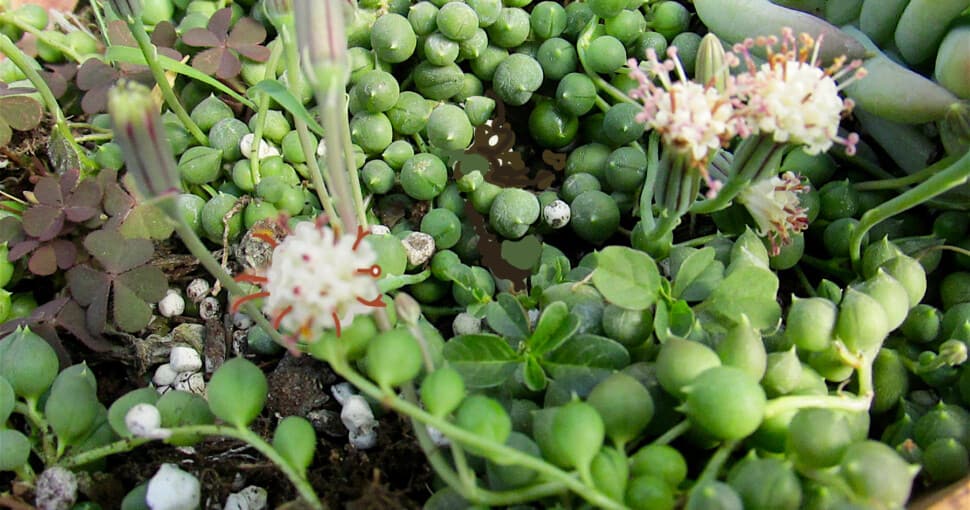String of Pearls is a unique type of succulent easily grown indoors. Their small round leaves resemble pearls. Their long trailing stems can easily spill over the planter they grow in by growing anywhere between five and fifteen inches yearly.
Contents
String of Pearls is native to East Africa but can be grown nearly anywhere. If you don’t have access to String of Pearls, consider purchasing a similar plant. Plants that are similar to String of Pearls include:
- String of Fishhooks – this hanging succulent has elongated leaves instead of round leaves.
- String of Tears – this succulent has round leaves similar to String of Pearls.
- Dolphin Necklace – this hanging succulent has short leaves that almost look like dolphins and resembles String of Pearls in their growth and length.
- Rosary Vine – though not a succulent, this plant resembles String of Pearls in the way it hangs off the edges of its planter.
- Red Pagoda – is a densely packed succulent that, if grown long enough, will hang off the edge of a planter, much like String of Pearls.
- Button Orchid – is a viny plant with round flat leaves resembling String of Pearls.
- Ruby Necklace – long hanging succulent with round leaves similar to the leaves of String of Pearls.
Adding any of these plants, similar to String of Pearls, into one of your rooms will breathe new life into your home. Choosing the right plant for your home could be tricky, though. Let’s look at these 7 plants resembling string of pearls more closely.
1. String Of Fishhooks (Senecio Radicans)
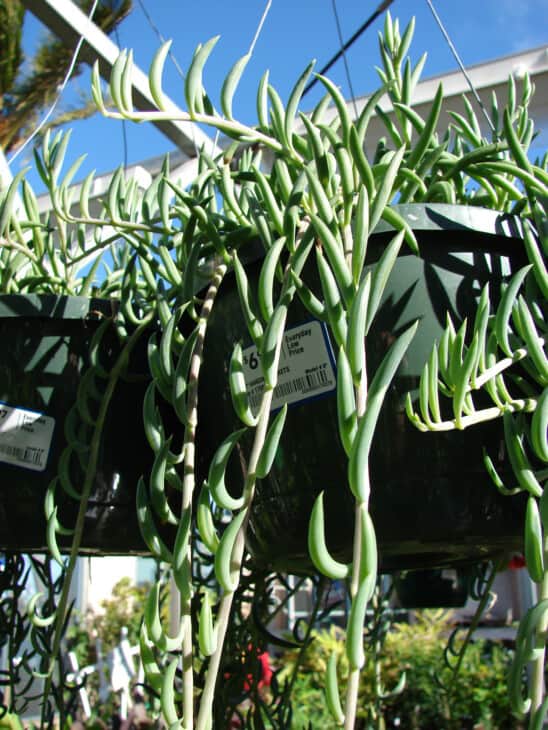
String of Fishhooks (Senecio Radicans) is perfect for anyone looking for a plant resembling String of Pearls. This easy-to-grow succulent can be kept indoors year-round and will continuously grow without much effort on your part.
String of Fishhooks is native to South Africa and holds nearly all its water in its tendrils. This water storage method keeps them looking fresh and healthy even during hot, dry summer months. You only have to water it once every two weeks to keep it happy.
If you plan on adding String of Fishhooks to your home, ensure you place it in direct sunlight. Ensure it is planted in well-draining soil, you don’t want its soil to retain too much water. Otherwise, it could lead to root rot.
2. String Of Tears (Senecio Herreianus)
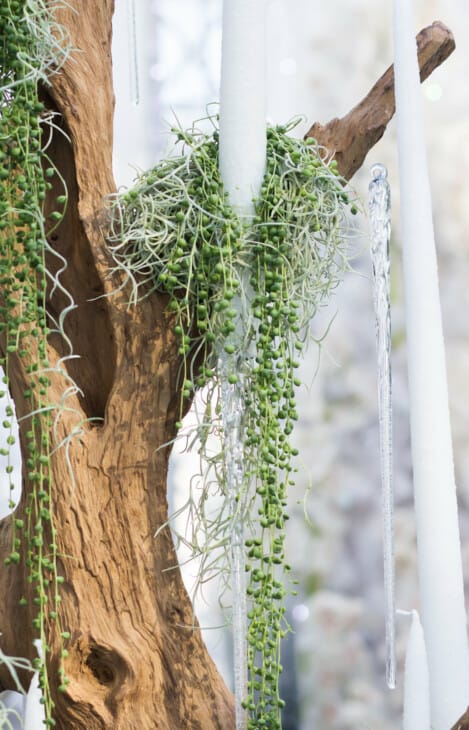
String of Tears (Senecio Herreianus) is also native to South Africa and is a member of the Asteraceae family. This succulent has tear-shaped bulbs that creep along its long and slender stems.
The ideal length for String of Tears plants is about a foot. Anything longer than this will become too hard to care for, so regular pruning is advised to keep it at its optimal length. When looking for a place to put your String of Tears, consider placing it near a window that gets direct sunlight, as this will ensure it gets enough light to mature fully.
String of Tears produces a sweet-smelling cinnamon scent and small trumpet-shaped flowers during the spring and summer months. This adds the right pop of color and fragrance to your home to make it the most inviting house on the block.
4. Dolphin Necklace (Senecio Peregrinus)
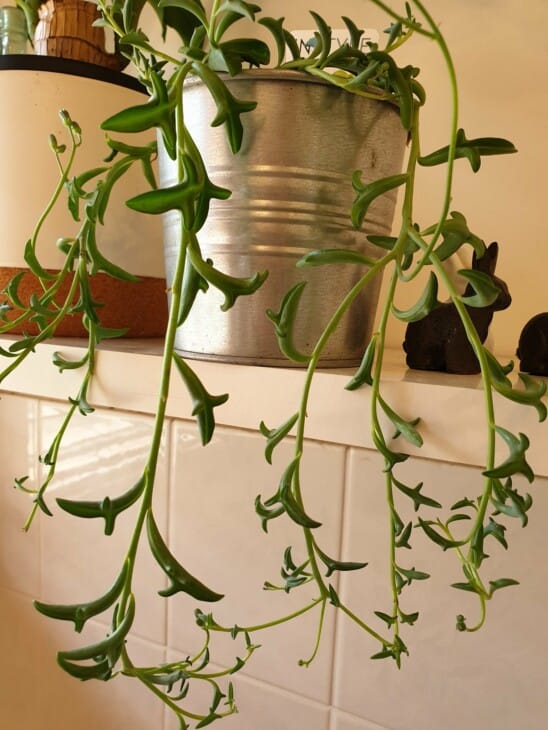
Are you an ocean lover and wish you could grow a dolphin in your living room? If you answer yes, look no further than Dolphin Necklace (Senecio Peregrinus). This succulent has a string of small leaves shaped like dolphins and cascades down from its planter like String of Pearls.
This versatile plant can be grown in hanging baskets or vertical gardens and can even be trained to grow up latices thanks to their long, creeping tendrils. If you plan on growing Dolphin Necklace outdoors, be warned that they aren’t very frost-resistant and could die if left out in the cold night.
Mature Dolphin Necklace grows about 6 inches tall and prefers full or partial sunlight. They are ideally planted in well-drained soil or cactus or succulent soil. If the prospect of seeing their tiny white flowers, be on the lookout for them when they bloom in early spring.
5. Rosary Vine (Ceropegia Woodii)
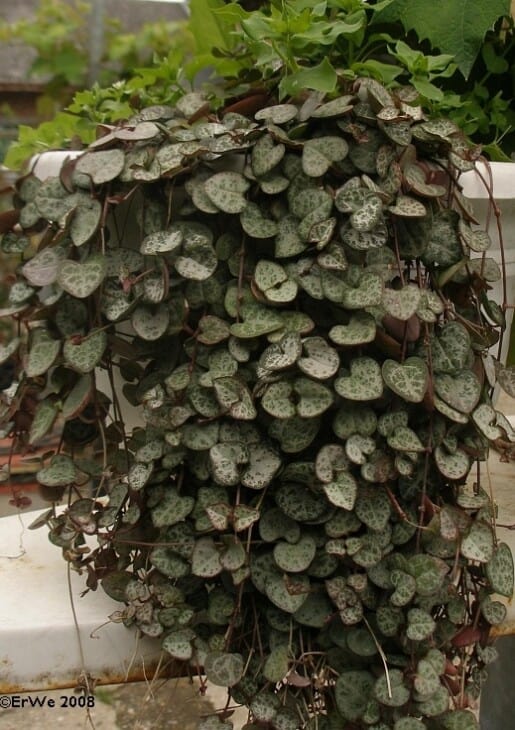
If you are feeling extra adventurous and want a plant that looks like String of Pearls but has a little more personality, consider adding a Rosary Vine (Ceropegia Woodii)to your home. This beautiful plant has heart-shaped leaves that grow on long slender tendrils that drape down from their planter, just like String of Pearls.
These heat-tolerant plants are easy to care for and require minimum sunlight. Planting them in pots with large drainage holes will ensure they get the right amount of water without fear of “over-watering” them.
Rosary Vines can be quite the tricksters in winter. When they hibernate, they seem almost dead to the untrained eye and require far less frequent watering. Be sure to fertilize its soil come spring, and your little Rosary Vine will be right as rain.
6. Red Pagoda (Crassula Capitella)
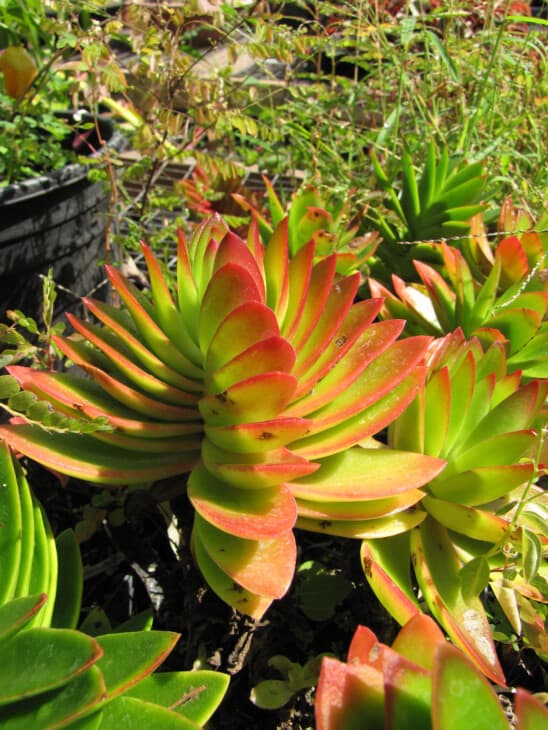
Red Pagoda (Crassula Capitella) might seem like an odd choice when discussing plants that look like String of Pearls. When left to grow long enough, the bright red, fleshy, triangular chartreuse leaves will drape elegantly off the side of its planter, much like the leaves of String of Pearls.
Red Pagoda grows to around six inches tall and eighteen inches wide and absolutely thrives in well-drained soils when placed near a window that gets a morning of full sunlight. They are also super low-maintenance and are virtually disease free, though they are prone to attracting small mealybugs, aphids, and vine weevils, so ensure that you keep those nasty critters off your Red Pagoda. Your Red Pagoda will thank you later.
The only caution to take with Red Pagoda is that it is known to be toxic to dogs, cats, and horses. So if you want to keep your furry little four-legged friends safe, keep your Red Pagoda well out of snout’s reach.
7. Button Orchid (Dischidia Nummularia)
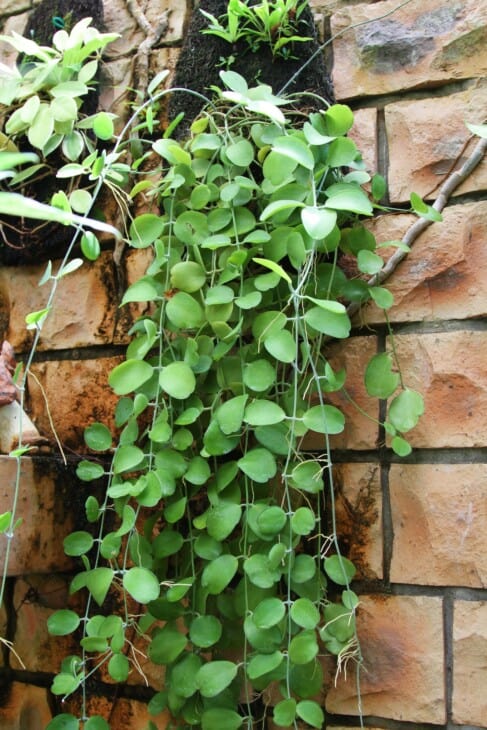
The Button Orchid (Dischidia Nummularia) is native to the humid tropical regions of Indonesia, China, India, and Myanmar and can be found as far south as Australia. Button Orchids have long vines and small, flat, round leaves, resembling a 2D version of their 3D cousin String of Pearls. If this plant had been more descriptively named, it would’ve been called String of Plates.
Button Orchids grow very well indoors, making for the perfect shelf plant when placed near an east-facing window. A little bit of morning sun goes a long way when trying to keep your Button Orchid happy.
Planting your Button Orchid in light, well-drained soil will allow its extensive roots to fan out and cover the whole planter, giving it the much-needed space to grow and really stretch those vines. Don’t worry about watering your Button Orchid too much. When it looks dry, spraying a couple of clouds of mist every now and again will ensure it stays fresher for longer.
8. Ruby Necklace (Othonna Capensis)
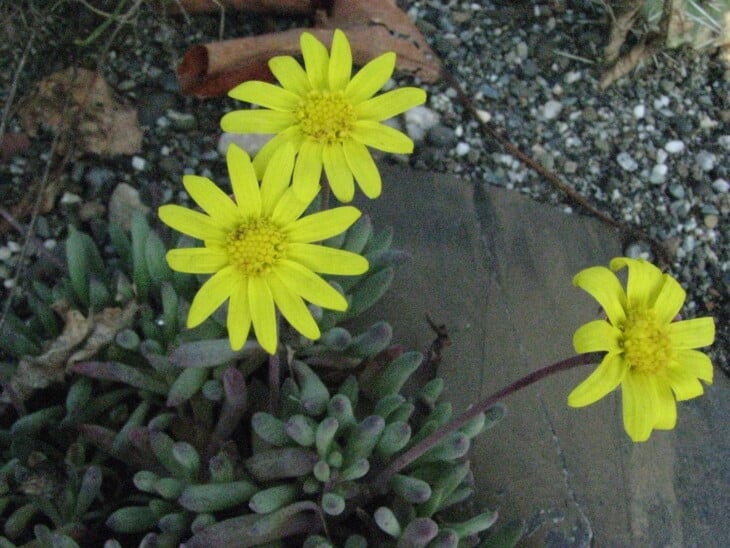
If you have ever looked at String of Pearls and wondered what they would look like if they were purple, then wonder no more. Ruby Necklace (Othonna Capensis) looks like a string of grapes fresh enough to pluck and eat on the spot. We wouldn’t recommend eating the leaves, though.
Ruby Necklace is perfect for apartment dwellers with only access to windows with low, indirect sunlight. During the hot summer, they go dormant and prefer more shade and less water. These plants grow the most during spring and fall and require lots of pruning to keep them from taking over your living room.
If you want a laid-back bachelor of a houseplant, consider getting a Ruby Necklace. It’s probably the hardiest houseplant on the market today.

